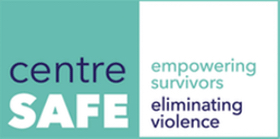Work Together to Help End Violence
Work Together to Help End Violence
by Anne K. Ard
March 9, 2014
March is Women’s History Month, a time to celebrate the accomplishments of women and to raise issues of importance in women’s lives. So here, to commemorate Women’s History Month, are some statistics from a recent study conducted by the Avon Foundation for Women:
• 60 percent of Americans know a victim of either or both domestic violence or sexual assault;
• 30 percent of women report being a victim of domestic violence;
• 20 percent of women report being a victim of sexual assault;
• While 80 percent of Americans believe that domestic violence is a problem in our society, only 15 percent believe it is a problem among their friends;
• 73 percent of parents with children younger than 18 say they have not had a conversation with their children about domestic violence or sexual assault.
Perhaps it is because women are so disproportionately the victims of domestic and sexual violence that we think and talk about that violence as a “women’s issue” — a phrase that is often used to trivialize whatever the subject is.
But increasingly, men are speaking up and taking responsibility for talking about domestic and sexual violence. Men are naming domestic and sexual violence for what it is — an issue of men’s violence against women.
It is certainly true that men can and do experience both domestic and sexual violence, both from women and from other men. And often, there are fewer resources available to those men who experience domestic and sexual violence (services are available to men through the Centre County Women’s Resource Center).
The statistical reality remains, however, that women are the primary victims of both domestic and sexual violence, and men are the primary aggressors. While that does not mean that every man is an abuser or a sexual predator, it does mean that men have to be part of the community conversation about the problem of domestic and sexual violence. To put it simply, women can’t fix this alone. Men must be involved.
And increasingly, men are becoming part of the solution. I see it every day on campus in male student involvement and leadership of groups like Men Against Violence and the Sexual Assault Prevention Roundtable, and activities such as Walk a Mile in Her Shoes.
In the community, it often takes more subtle, but no less important, forms, such as men volunteering to work on the CCWRC hotline, serve on our board of directors, or participate as role models and mentors in the Youth Service Bureau’s Big Brothers Big Sisters program.
Our commitment, both by women and men, to end domestic and sexual violence can’t be only a public one, however. It must pervade our lives and reach down into our families and households. It must affect how we raise our sons as well as our daughters, the lessons we teach them and the values we share about what is important. Women and men, fathers and sons, mothers and daughters all working together to end domestic and sexual violence — that would truly be a historic achievement and a reason to celebrate.
Anne K. Ard is the executive director of the Centre County Women’s Resource Center, 140 W. Nittany Ave., State College. Contact her at 238-7066 or annek ard@ccwrc.org.






